How to Care for a Venus Fly Trap
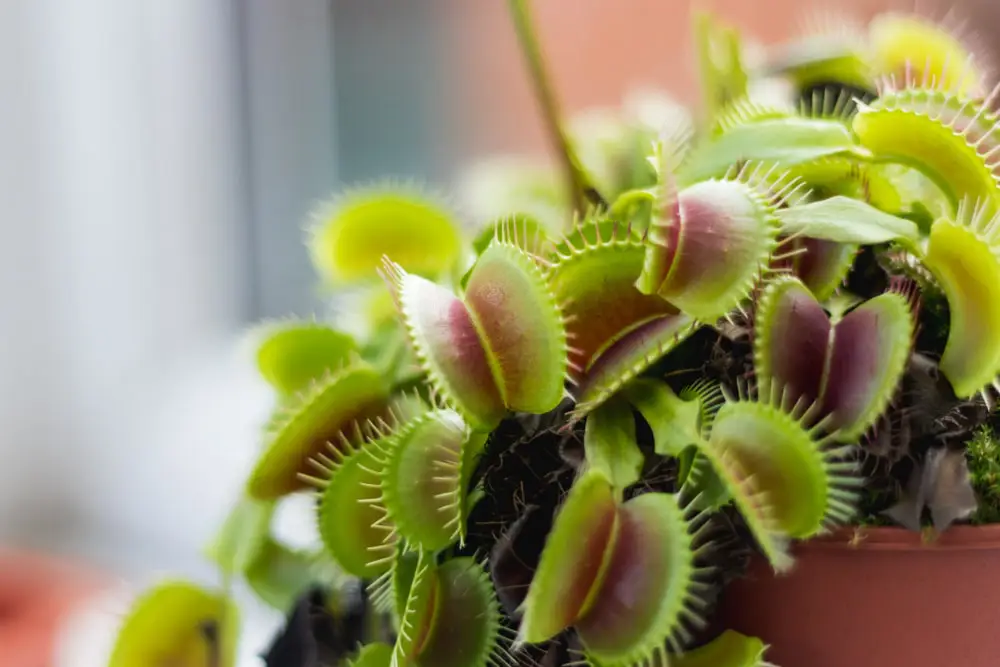
When it comes to unique plants, a Venus Flytrap is at the top of the list. These plants look interesting and have unique characteristics that make them attractive to many DIY gardeners. Before you go out and purchase one, here are some things you should know to ensure they thrive under your care.
A Venus flytrap requires nutrient-deficient soil and a lot of sun to survive. In a cold climate like Canada, growing a Venus flytrap indoors is recommended, as this plant cannot survive in temperatures below five degrees Celsius. Be sure to keep the humidity at 50% or higher and water it enough that the soil stays damp but not soaking wet.
Table of Contents:
Venus Flytrap Growth Stages

Whether you purchase a seeded Venus flytrap that has started to grow or grow it from seed, you can expect your Venus flytrap to go through these stages of growth:
- Seed germination – seeds from a Venus flytrap are tiny, shiny, and black. It’s best to germinate seeds soon after they’re harvested. The longer you wait, the less likely they are to sprout.
- Dormancy – Venus flytraps go dormant annually. They shed all their leaves and may even shrink in size. The plant is sometimes mistaken for dead during this phase, but it’s more like hibernating.
- Flowering/ Blooming – Many people don’t know that Venus flytraps also produce flowers in addition to traps. Shortly after coming out of their dormant period, they will grow one to three flower stems that produce white blooms.
- Seed propagation – Venus flytraps are self-pollinating. The seeds they produce are similar but not exact clones. Growing season – The growing season for a Venus flytrap starts at the end of March and lasts through mid-September.
- Vegetative propagation – Propagation, or growth of a new plant, usually only occurs during the growing season, when the plant is most active.
Learn More About How to Care for Indoor Plants
How to Care for a Venus Flytrap Indoors
Due to the cold climate in Canada, the only way to maintain a Venus flytrap is to grow it inside. Use the following information about their growing preferences to help them thrive:
Best Soil for Venus Flytrap
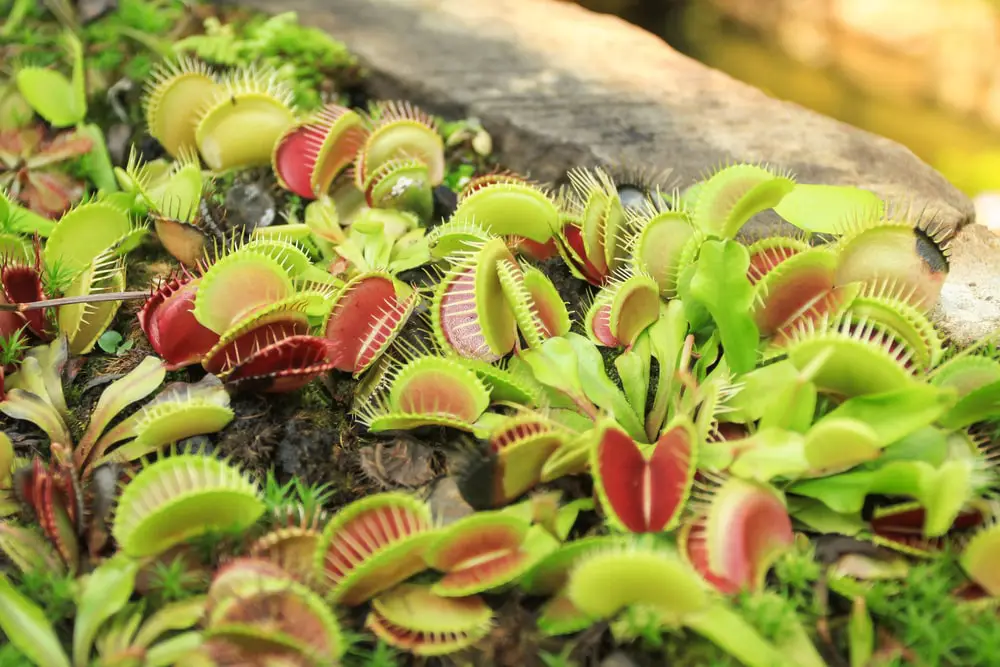
Whether you choose to buy specialized potting soil or make your own, the growing medium must be nutrient-poor in order for these plants to survive.
Regular potting soil will burn the roots, as will any type of commercial fertilizer, and both must be avoided. A 50/50 blend of peat moss and perlite will provide the proper aeration and water retention. It’s best to purchase purified forms of peat moss as many brand-name products also contain fertilizer.
Watering a Venus Flytrap
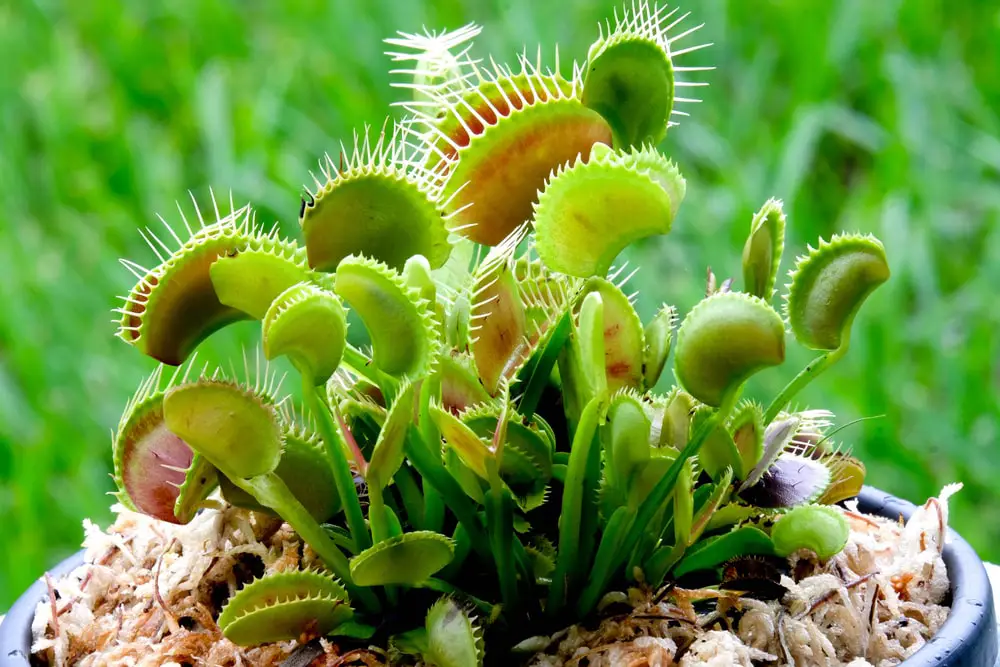
In nature, the Venus flytrap grows in damp soil with no nutritive value, and it will not respond well to tap water containing minerals, including sodium, sulfur, chlorine, magnesium, and more.
Carnivorous plants should only be watered with pure water, such as distilled, reverse osmosis, or rainwater.
These plants prefer soil that is damp but not overly saturated. During active growth (March to September), plants should be monitored to ensure the soil doesn't dry out completely while keeping it consistently moist.
During dormancy periods (November to February), keep your Venus flytrap in a cool location, such as the fridge. The soil should be allowed to dry out almost completely before watering.
Light
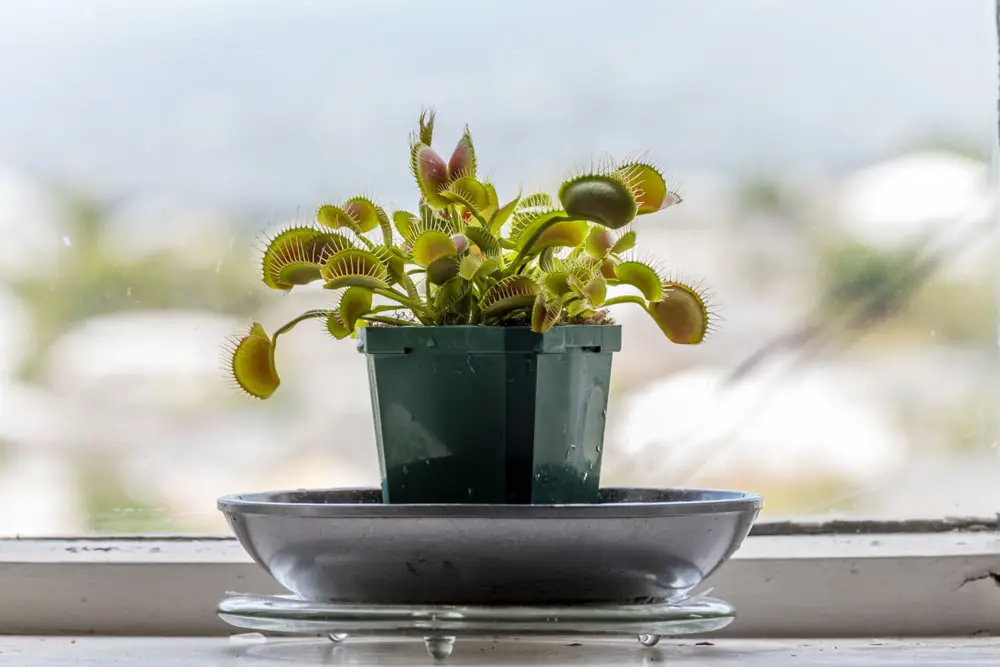
During the months of active growth, plants should receive at least four hours of direct light and at least 12 hours of light overall. A bright, south-facing window ledge is the ideal location, but during periods of dormancy, the same window ledge will likely be too warm.
When caring for a dormant Venus flytrap, move the plant to a cooler location, such as an unheated greenhouse or beside a window in the garage, and remember to provide enough water to keep the soil from drying out.
Feeding
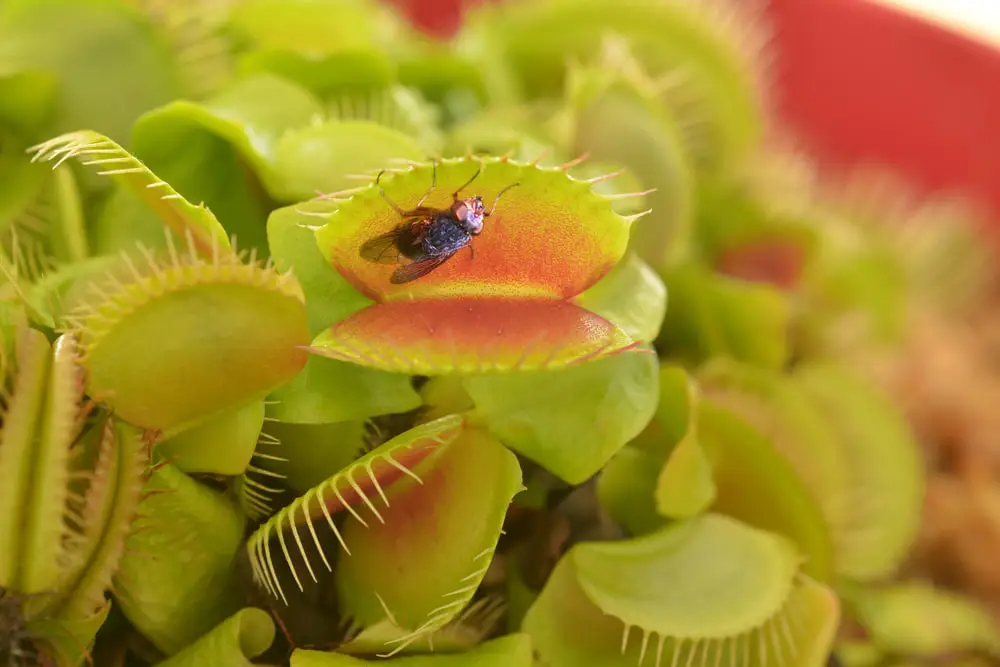
A Venus fly trap can distinguish between food and non-food items and won't spend the energy closing the trap on something not considered prey. Each trap has six trigger hairs, three on each side, and two of them must be tickled so the plant can spring into action.
Once it has closed, the trap seals tightly to prevent the prey from escaping, and the digestive process begins. In approximately ten days, the process is complete, and the trap reopens to discard the husk.
Most plants can sustain themselves on their own with common household insects, but if you choose to feed it yourself, use only live or dead insects, resisting the urge to give it raw meat, which will eventually kill the plant.
Venus Flytrap Facts

While the Venus flytrap is not the only carnivorous plant species, it’s arguably the most well-known and has made appearances in many movies and cartoons.
These plants are found in areas where the soil has little to no nutritive value, forcing them to obtain nutrients from other sources.
Dionaea muscipula, or Venus flytrap, is native to the coastal bogs of North and South Carolina.
These plants can live up to 20 years or longer and are considered vulnerable to extinction due to the desecration of natural habitation and over-harvesting.
Venus flytraps are perennials and will continue to bloom year after year, producing tiny white flowers decorated with green veins.
During dormancy, Venus fly trap leaves will turn, and the traps will fall off. Venus fly traps can also digest human flesh. Each trap will only last four to six feedings before turning dark and falling off
Need Help Caring for Your Outdoor Garden?
While taking care of one plant is doable for most people, taking care of a whole yard can be a challenge. The Grounds Guys® know plants, trees, lawns, mulch, and more! Whether you need fall clean-up or want to plan your spring landscaping projects, contact The Grounds Guys team to schedule an appointment online today!
 Click to call
Click to call


